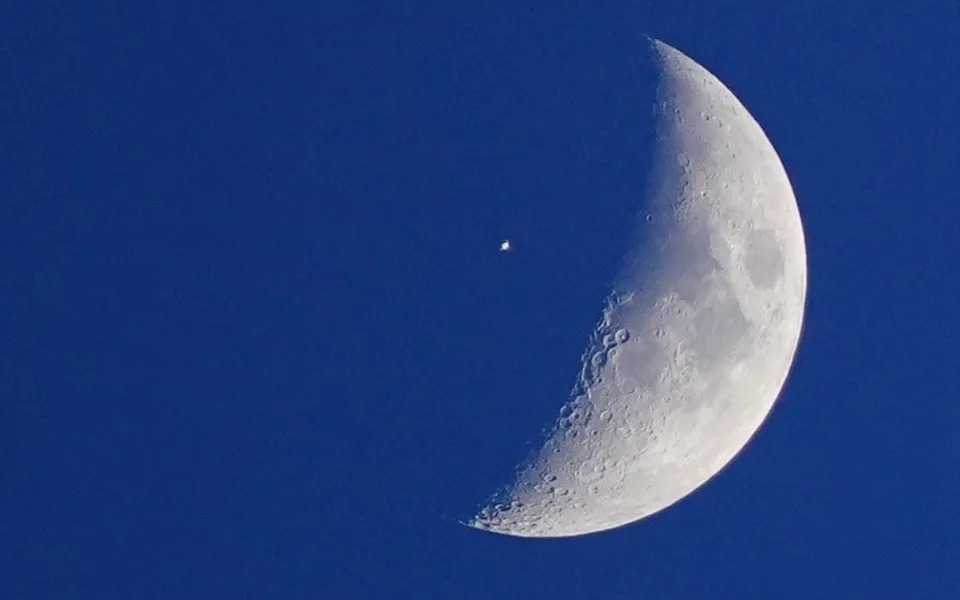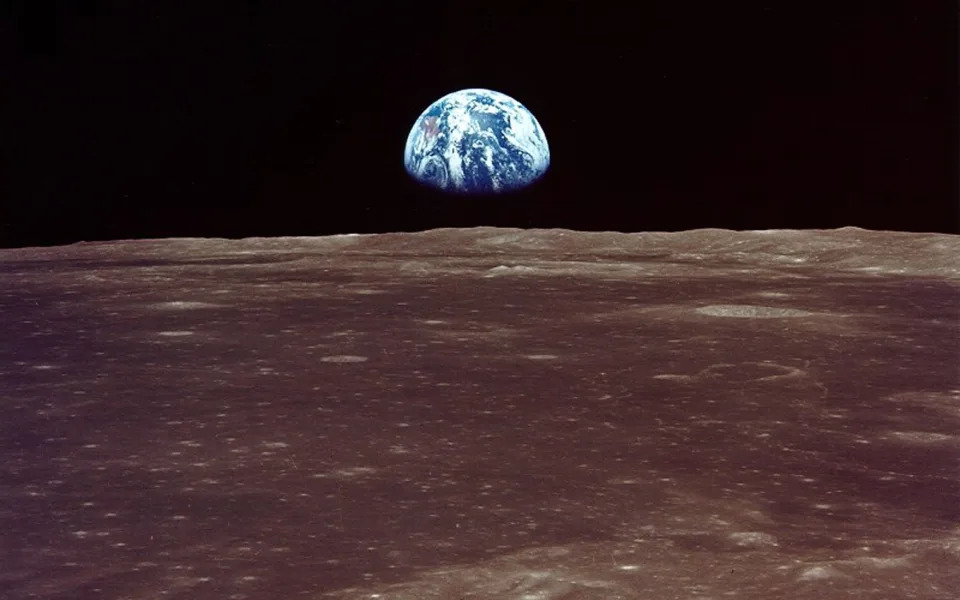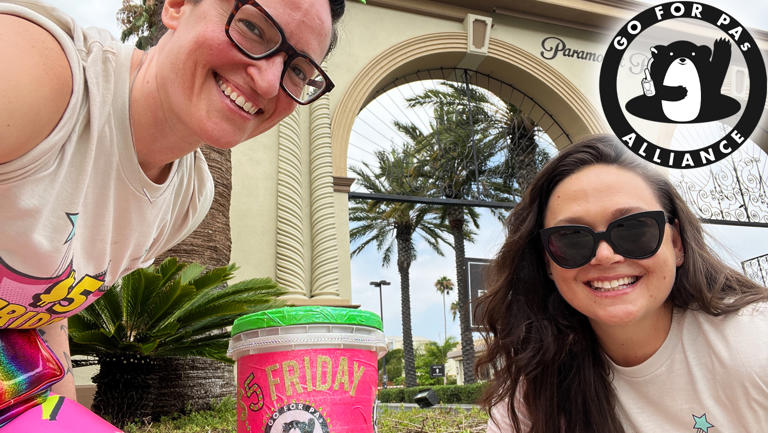Boris Starling
Thu, 24 August 2023

Like any Earth city, settlements would need supplies of energy and food
It was in 1962, 61 years ago, that President John F Kennedy pledged to put a man on the Moon before that decade was through. Now NASA has stated that humans will be living and working there within the next 10 years – an ambition that shuffled just a little closer to reality this week, after India became the first country to successfully land a craft near the Moon’s south pole.
If that sounds like an extraordinarily expensive, ferociously ambitious project, remember the words of President Kennedy, who, during that same speech, pointed out that humans choose to do these things, “not because they are easy, but because they are hard”. That sentiment remains as true today as it was then. Permanent lunar habitation will be one of the most difficult things mankind has ever done, and it poses several immediate questions.
For a start, where on the Moon would such a settlement be? Not everywhere on our friendly satellite is equal when it comes to settling there. Thanks to its orbital path, the Moon has a long day-night cycle, with each day or night lasting more than an Earth fortnight.
This means that the most likely place for human settlements is near one of the poles, where light is all but permanent, and the variations between temperature extremes are much less severe than in equatorial regions. There are also thought to be considerable water deposits at the poles – though Chinese scientists have just reported that glass beads found on the lunar surface contain water, raising the prospect of another potential source for astronauts to use for fuel and drink. Two specific sites often mentioned are Mount Malapert, near the south pole, and the rim of the Peary crater, near the north.
Experts from the Goddard Space Flight Center say that Mount Malapert is probably saturated with implanted hydrogen and helium. There’s a broad, smooth landing area, demonstrably in continuous microwave visibility of Earth (for tracking and communications). And, not far away, are permanently shaded areas to the south, which could be easily reached by a vehicle driven down the south flank of the mountain.
But if that doesn’t appeal, advantages of the rim of the Peary Crater (named after the polar explorer, Robert Peary) include its large, flat topography, surrounded by four mountainous regions on the rim – known as peaks of eternal light – which stay bright all lunar day. This light source means a relatively stable temperature and solar power.
Having chosen the location, accommodation would also likely take one of two forms: below the surface in subterranean lava tubes, or on the surface in biodomes. Underground has the advantage of greater protection from meteorite strikes and from solar radiation, which is around 200 times more powerful on the Moon than on Earth.
But overground offers easier access and transport, not to mention the mental fillip of being “outside”. A mixture of the two is most likely. Lunar buildings could be created with 3D-printing technology, using regolith – moon dust – as the primary construction material: it contains aluminium, silicon, iron, calcium, magnesium and titanium.
Like any Earth city, settlements would need supplies of energy and food – so where would they be found?
The former will come from a mixture of solar power (hence the need to be near the poles) and water (broken down into its constituent parts of hydrogen and oxygen to make propulsive fuel). At first, food would need to be brought from Earth, but eventually hydroponic crops and artificial food production should be ongoing concerns. Think Matt Damon in The Martian, cultivating potatoes and using biowaste to fertilise it.
The project may sound like a Hollywood plotline, but six space agencies have lunar ambitions: NASA, the European Space Agency (ESA), Russia, China, Japan and India – as do individual billionaires such as Elon Musk and Jeff Bezos. Accommodating them all, beyond an initial smattering of scientists, will pose serious legal and practical problems, and will involve building a new society from scratch.
In legal terms, the Moon is currently under the jurisdiction of the 1966 Outer Space Treaty, which states that outer space is “not subject to national appropriation by claim of sovereignty” and shall be “free for exploration and use by all states”. This treaty will obviously need to be renegotiated and hugely expanded, finding a way to balance the demands of individuals as wealthy and powerful as entire countries.
Whatever the mix of nations and cultures, every person there will have to deal with the huge physical and psychological consequences of living in one-sixth gravity and 250,000 miles from Earth. Most of these effects are as yet unknown. For example, our bodies have evolved in Earth gravity over tens of thousands of years: how will our musculoskeletal and cardiovascular systems adapt to a much lighter force?
And while it’s true that astronauts have spent more than a year at a time on board the ISS (International Space Station), Earth has always loomed vast and comforting just below them; how will it feel when their home planet is little bigger in the lunar sky than the Moon is in ours? Psychologists already warn that astrophobia – fear of outer space itself – could be a future concern. Loneliness would surely be an immediate worry.

The International Space Station looking like a white dot as it passes the Moon - Peter Byrne
With so many complicating factors, the idea of setting up colonies on the Moon does seem to be fantastical still. But the rewards of achieving the goal go far beyond President Kennedy’s suggestion that humans are driven by the need to achieve the impossible for its own sake.
He could not have imagined the space-suited conquistadors of the 21st century would have their eyes on quite a different, less noble prize. To be precise, Helium-3, an element vital for producing nuclear power.
Then again, that most cynical explanation is unlikely to justify the vast effort and expense of permanent lunar habitation. Estimates of cost vary hugely; but NASA has estimated that it costs $10,000 for every pound of equipment – whether you are weighing equipment, rice or souvenirs from home – it sends to the Moon. Online science project Wendover suggests a figure of $36 billion is needed to support four astronauts for a year, or about $100 million a day.
The true rationale and imperative is likely to be much more existential, predicated on the fear that, so long as we are confined to Earth, humanity has too many eggs in one rather fragile basket. The possibilities of nuclear war, pandemics and climate change make a back-up home somewhere between desirable and essential.

Earthrise, viewed from the 'Apollo 11' mission's lunar landing module in 1969 - NASA HANDOUT/EPA-EFE/REX
“Single-planet species don’t survive,” said John Young, the ninth man to walk on the moon. “Living off the planet is probably not a bad strategy for survival. Sooner or later it will be one of the motivations of having bases on the Moon.”
Nor is lunar habitation an end in itself, but the first step in off-world living and exploration: a jumping-off point for missions to Mars, other planets, and interstellar travel.
This, however, is not a matter of just a decade, but a long process. The ISS orbits 250 miles above Earth; the Moon is around 250,000 miles away; and Mars can at times be 250 million miles away. Each destination is therefore a thousand times further away than the previous one.
“You don’t want to send humans to the Moon,” said Andy Weir, author of The Martian. “You want to send robots. Humans are soft and squishy and they die. Robots are hard and nobody gets upset when they die.”
But we are going back, soft and squishy or not. “There is no strife, no prejudice, no national conflict in outer space as yet,” Kennedy said in that 1962 speech. “Its conquest deserves the best of all mankind, and its opportunity for peaceful cooperation may never come again.” The second part still holds: how long the same can be said for the first part remains to be seen.









